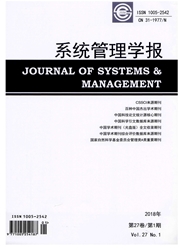

 中文摘要:
中文摘要:
基于传统空气污染物与温室气体的相互影响关系(替代或互补),运用动态微分对策理论分析协同与非协同减排机制,并进行了数值模拟,模拟结果发现,如果传统空气污染物和温室气体之间可替代,协同治理下的传统空气污染物和温室气体的最优瞬时排放量和最优排放路径均低于非协同治理下的结果;但如果是互补关系,协同治理下的温室气体的最优瞬时排放量和最优排放路径均高于非协同治理下的结果,而传统空气污染的最优瞬时排放量和最优排放路径可能低于非协同治理下的结果。此外,协同治理下的净收益刚开始略低于非协同治理下的结果,但随着时间的推移前者很快超过后者。因此,从长期来看,协同减排为最优控制策略。
 英文摘要:
英文摘要:
Based on the interaction between the traditional air pollutants and the greenhouse gases,this paper compares the collaborative abatement and non-collaborative abatement using a differential game whereby the damage costs and the abatement costs of several pollutants are not separable.Numerical simulation results show the optimal emission levels and trajectories of the greenhouse gases and traditional air pollutants under the collaborative abatement are lower than those under the in-collaborative abatement if the two kinds of pollutants are substitutable.On the other hand,if the two are complementary,then the collaborative abatement leads to the higher emission of the greenhouse gases and the lower emission of the traditional air pollutants than the non-collaborative abatement does.Additionally,the collaborative abatement brings about a bit lower profits than the non-collaborative abatement does,but quickly the former surpasses the latter.In the long run,the collaborative abatement is the optimal control strategy.
 同期刊论文项目
同期刊论文项目
 同项目期刊论文
同项目期刊论文
 期刊信息
期刊信息
